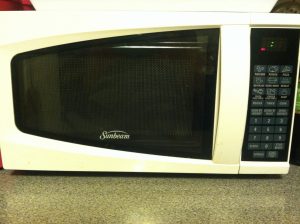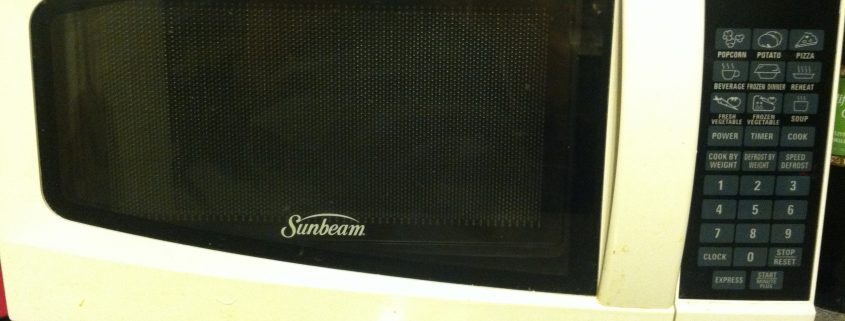Microwave Cooking
 With the holiday season in full-force, there is less time during the week for cooking and preparing meals for ourselves and our families. Today is Microwave Oven Day in which we revel in the great invention that has helped immensely with our modern-day lifestyles. Microwave ovens use electromagnetic radiation to heat foods up quickly, efficiently, and evenly compared to other slower methods of heating and cooking.
With the holiday season in full-force, there is less time during the week for cooking and preparing meals for ourselves and our families. Today is Microwave Oven Day in which we revel in the great invention that has helped immensely with our modern-day lifestyles. Microwave ovens use electromagnetic radiation to heat foods up quickly, efficiently, and evenly compared to other slower methods of heating and cooking.
There are those who fear cooking with a microwave due to the radiation by which microwaves heat food. However the FDA sets and enforces standards of performance for microwave products to make sure that radiation does not pose an issue to the public health. Illnesses or injuries that have been reported to the FDA that allegedly have involved a microwave are accidents that were unrelated to radiation, but were caused by splattering of food, burns due to touching too hot surfaces, and other such kitchen accidents.
Celebrate the day by using these tips, and learn the benefits of microwave cooking to create a healthy and easy meal for you and your loved ones tonight!
Preserve nutrients– Many nutrients in vegetables are sensitive to heat. When they are cooked, it can sometimes lead to certain vitamins being lost in the cooking process. The nutrient most sensitive to heat is Vitamin C, which is found in large quantities in vegetables such as peppers, kale, spinach and broccoli. Because microwave cooking is faster than other forms, the amount of nutrient retention is higher, thus healthier for you to enjoy.
Arrange your plate– Place thicker food on the outside of the plate before heating and keep the smaller pieces of food in the center for a more even distribution of heat. Never reheat food in a metal container or aluminum foil; recent health studies have also advised against heating in plastic containers or plastic wrap. Using a glass plate or container is the safest choice.
Circles are better than Squares- Along with the arrangement of thicker foods on the outside of your plate, using a circular or oval shaped dish is better than a square or rectangular one. Because of the square dish’s edges, the energy of the heat tends to be directed there, causing the food in that area to become overcooked or burnt.
Forget the salt, add the water- Be wary of adding salt to food before microwaving. Aside from the health factor, salt on top of food attracts the heat waves that are generated during microwave cooking, which can lead to food becoming dried out. Adding alternative spices to your leftovers is a great way to add back some flavor that may have been lost. Bonus tip: Adding about a half an inch of water to frozen vegetables or fruits, or sprinkling water over leftover dishes will keep foods from drying out.
Defrosting- When defrosting food in the microwave to speed up cooking time, remember to immediately cook the food in the oven or on the stove. Leaving partially defrosted/cooked food out may lead to food borne illness.
While many think of their microwaves solely as a method of quick reheating or defrosting, it really is a convenient and healthy way to prepare a speedy meal.
What is your favorite dish to make in the microwave?


Trackbacks & Pingbacks
[…] the original post: Microwave Cooking | BRG Health • Bonnie R. Giller • Dietetics … Posted in Exercise, Nutrition | Tags: bonnie-giller, exercise, fodmap, health, […]
Leave a Reply
Want to join the discussion?Feel free to contribute!